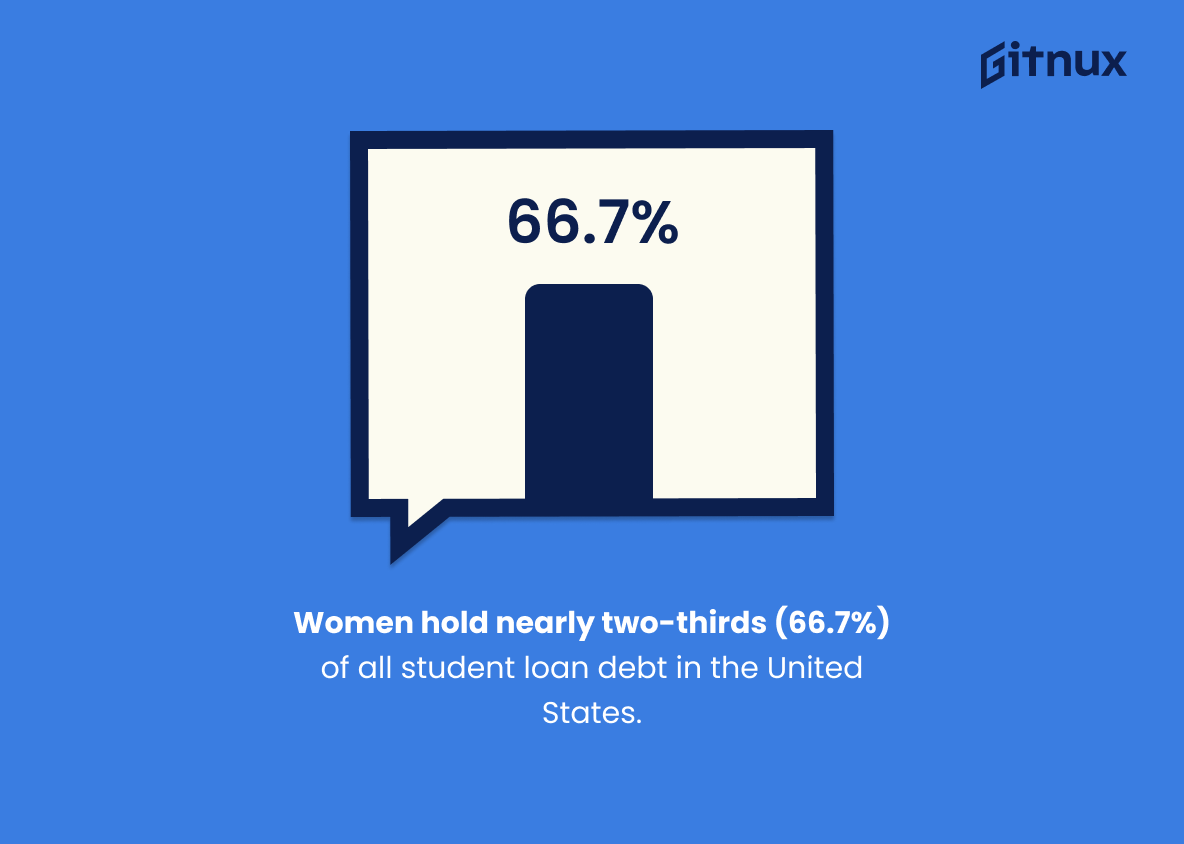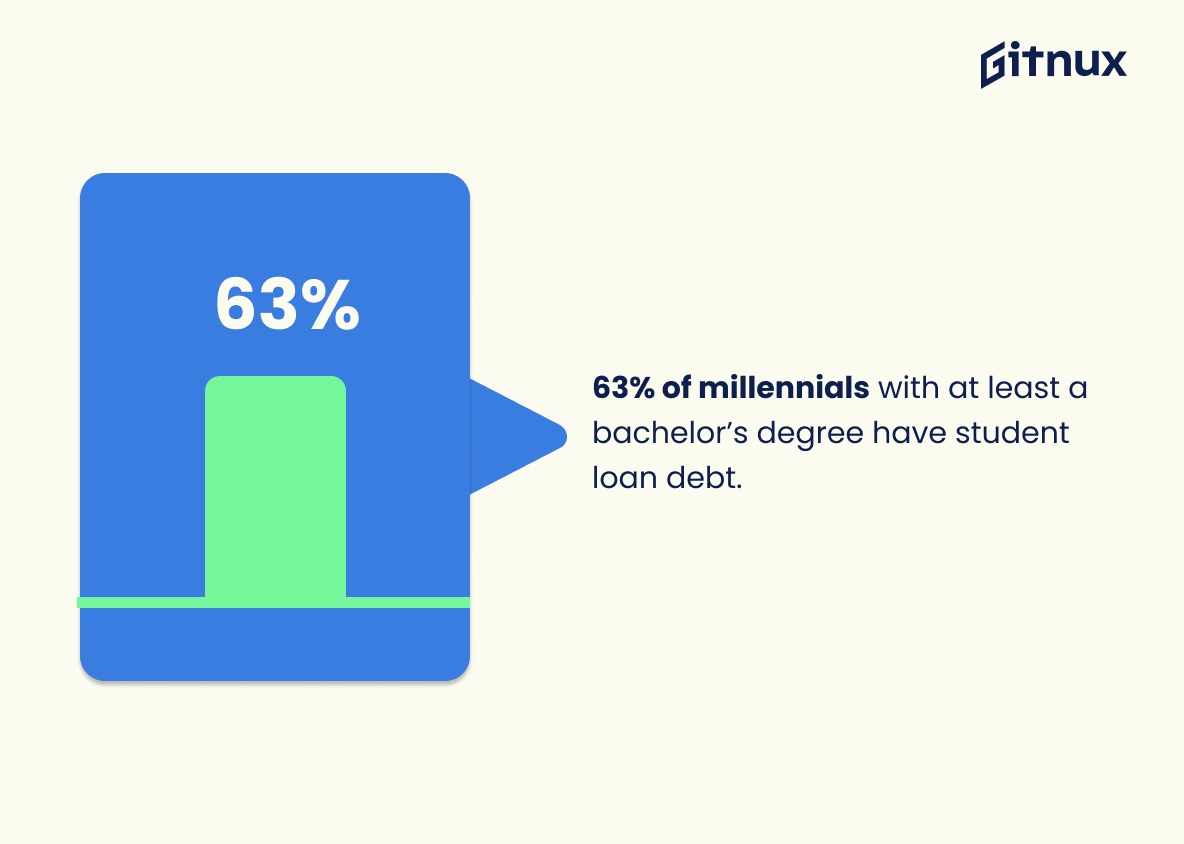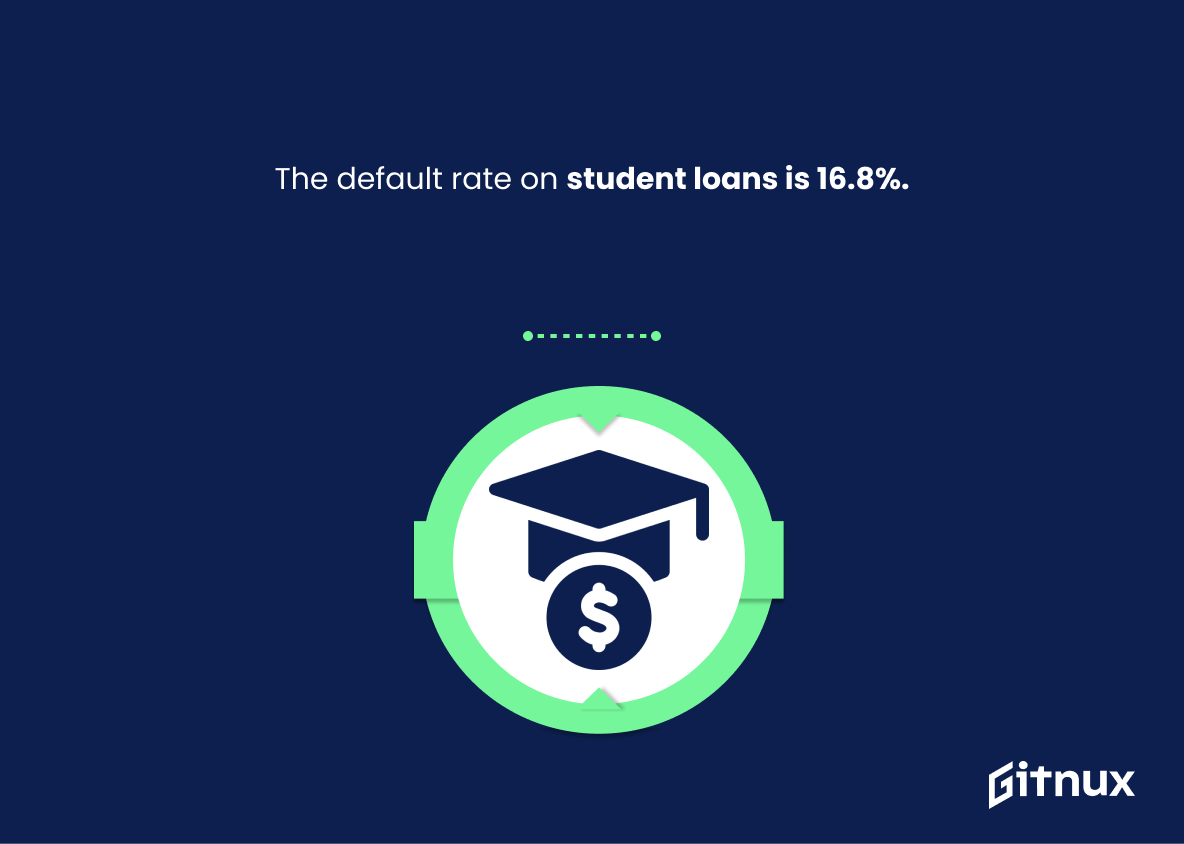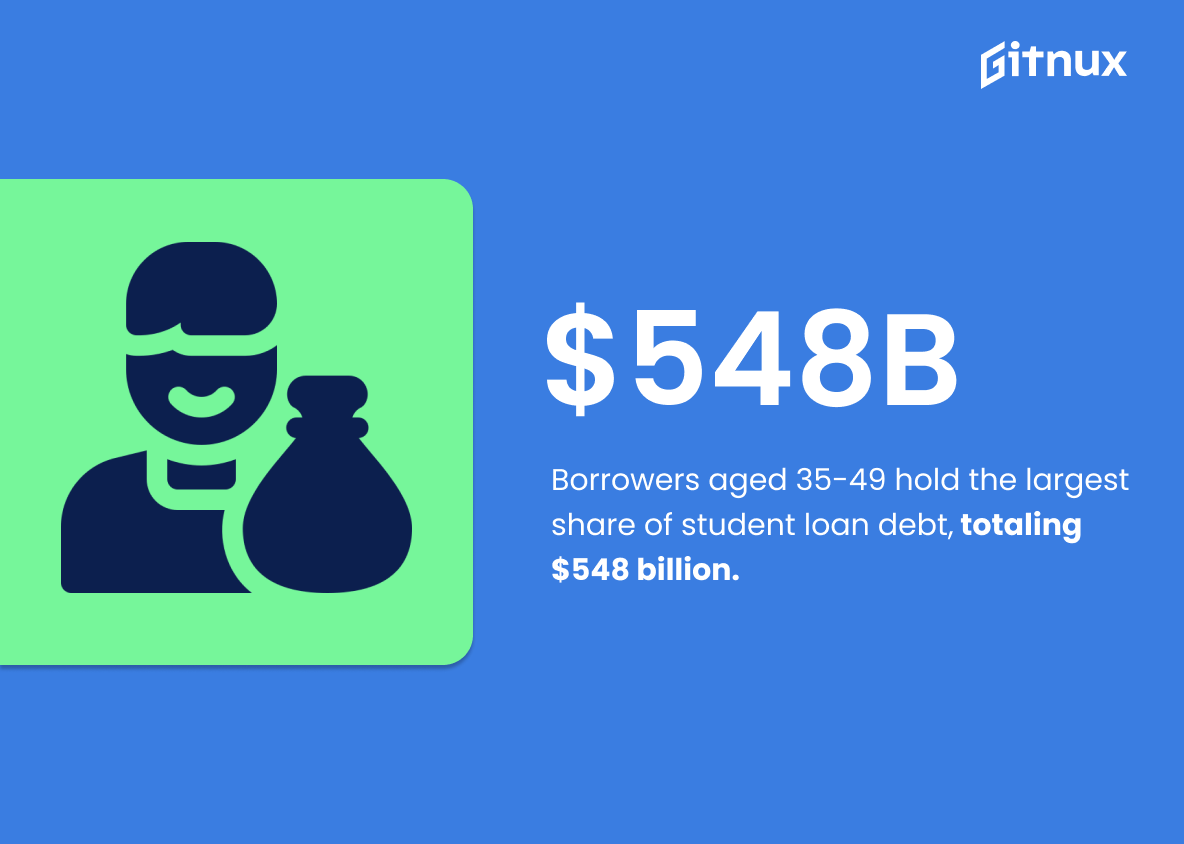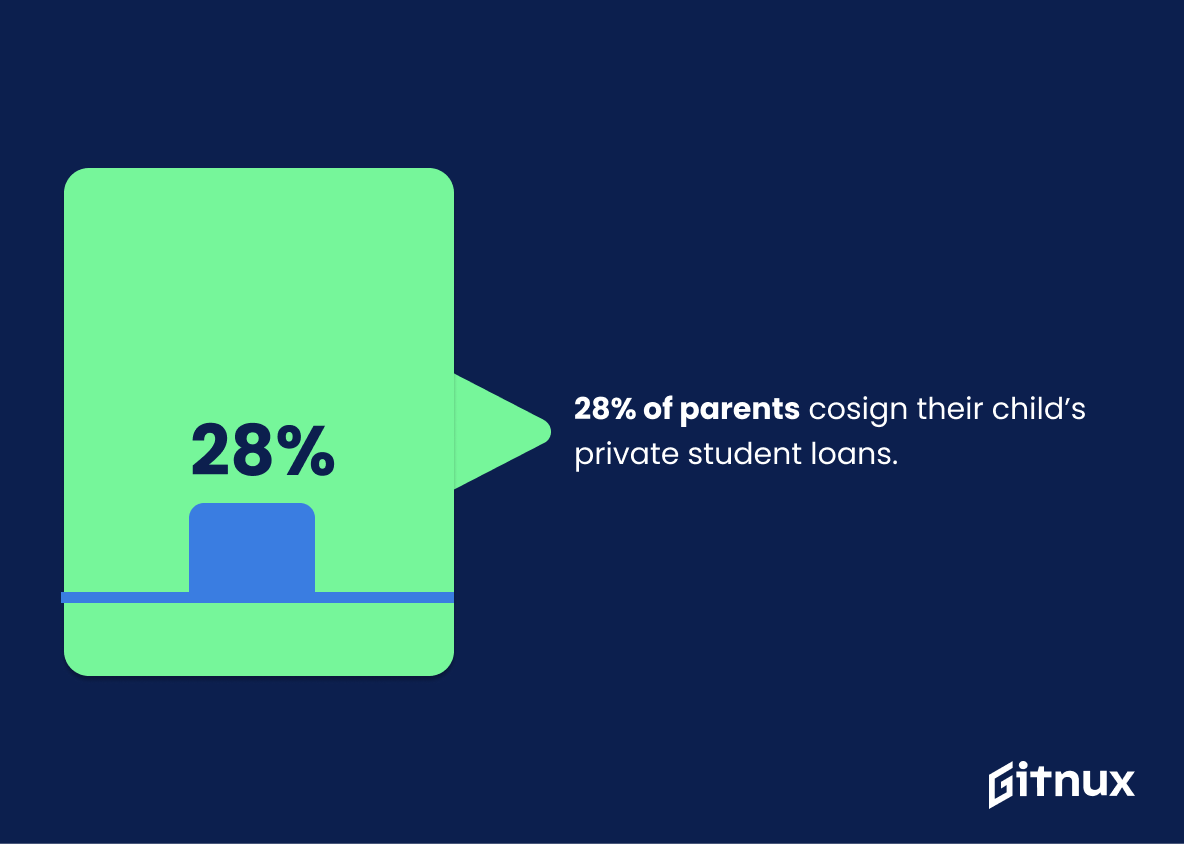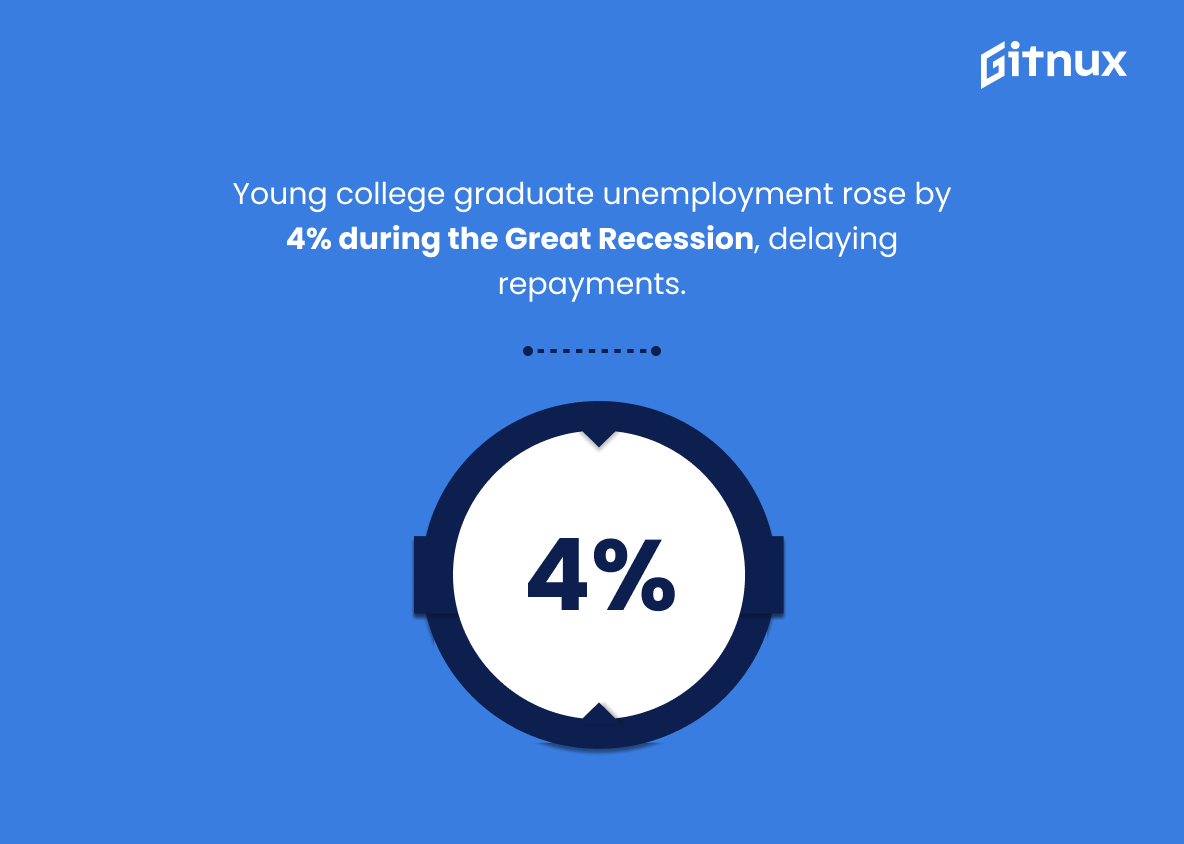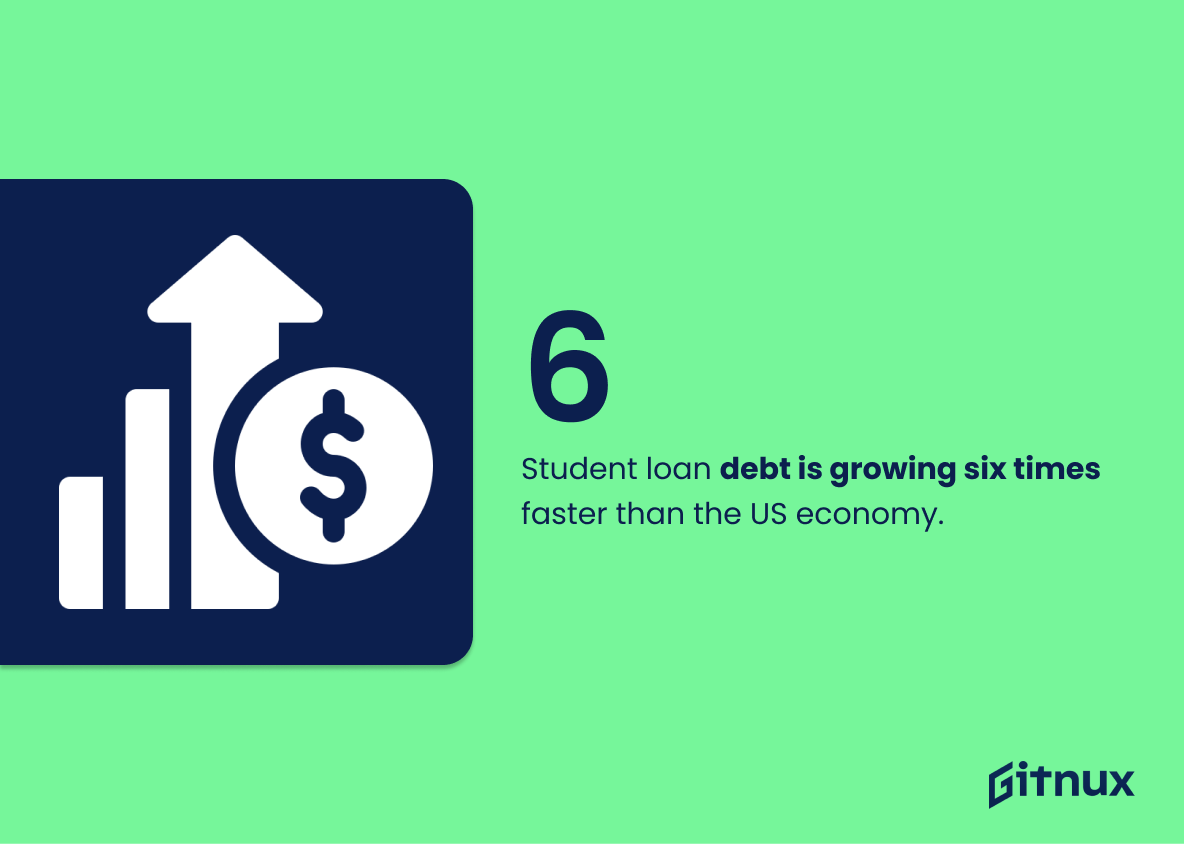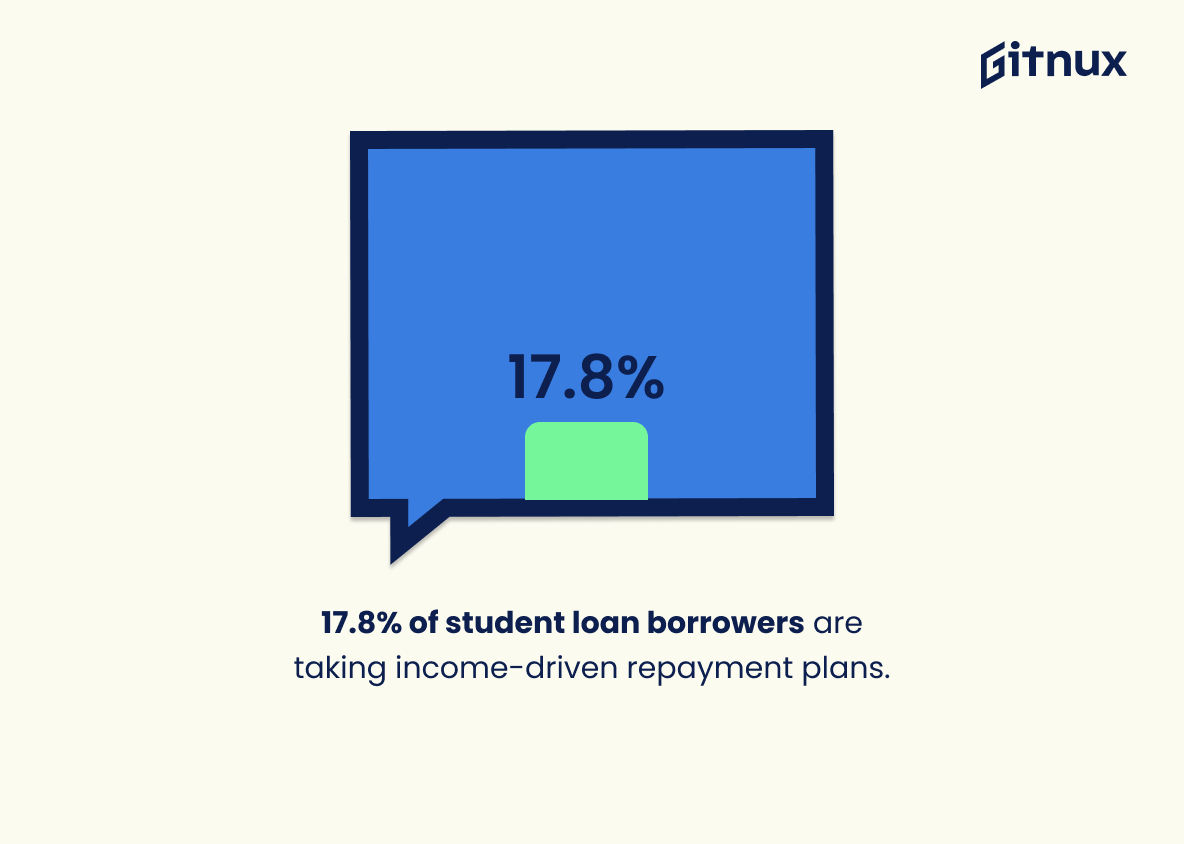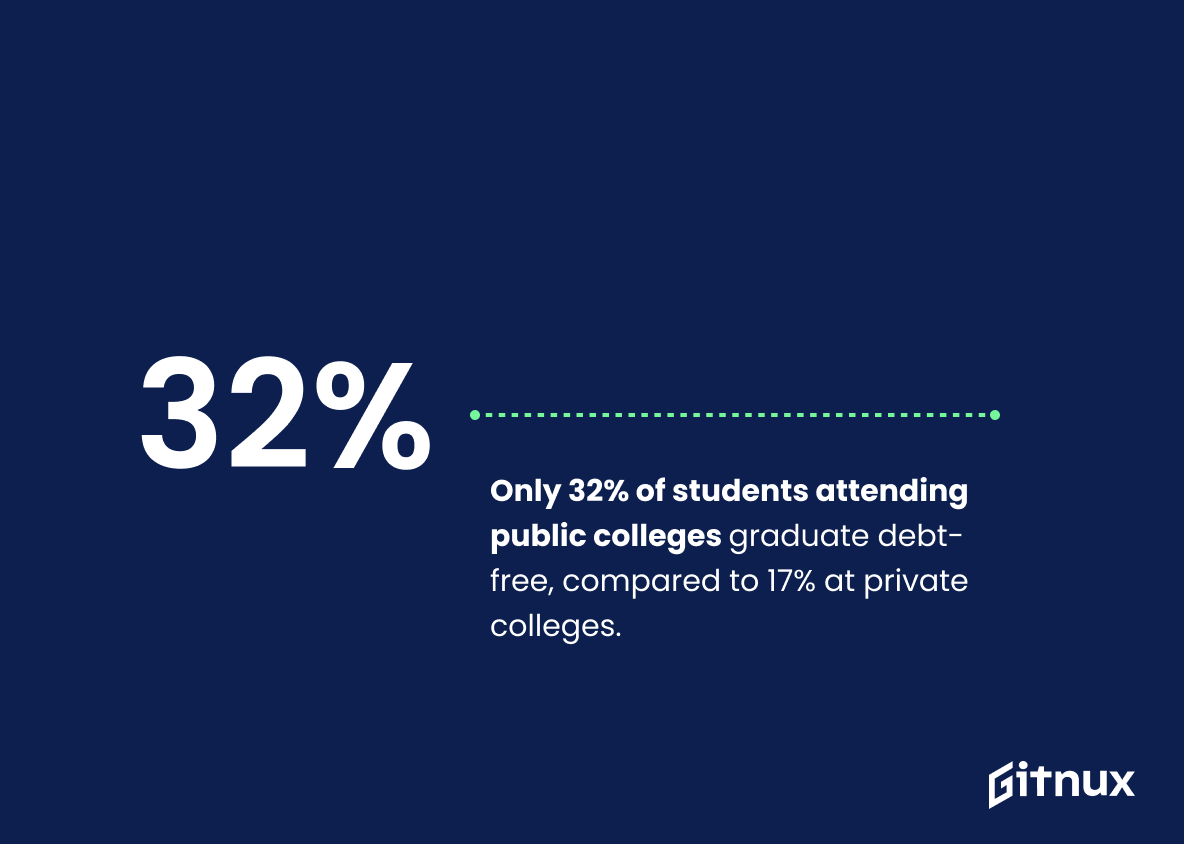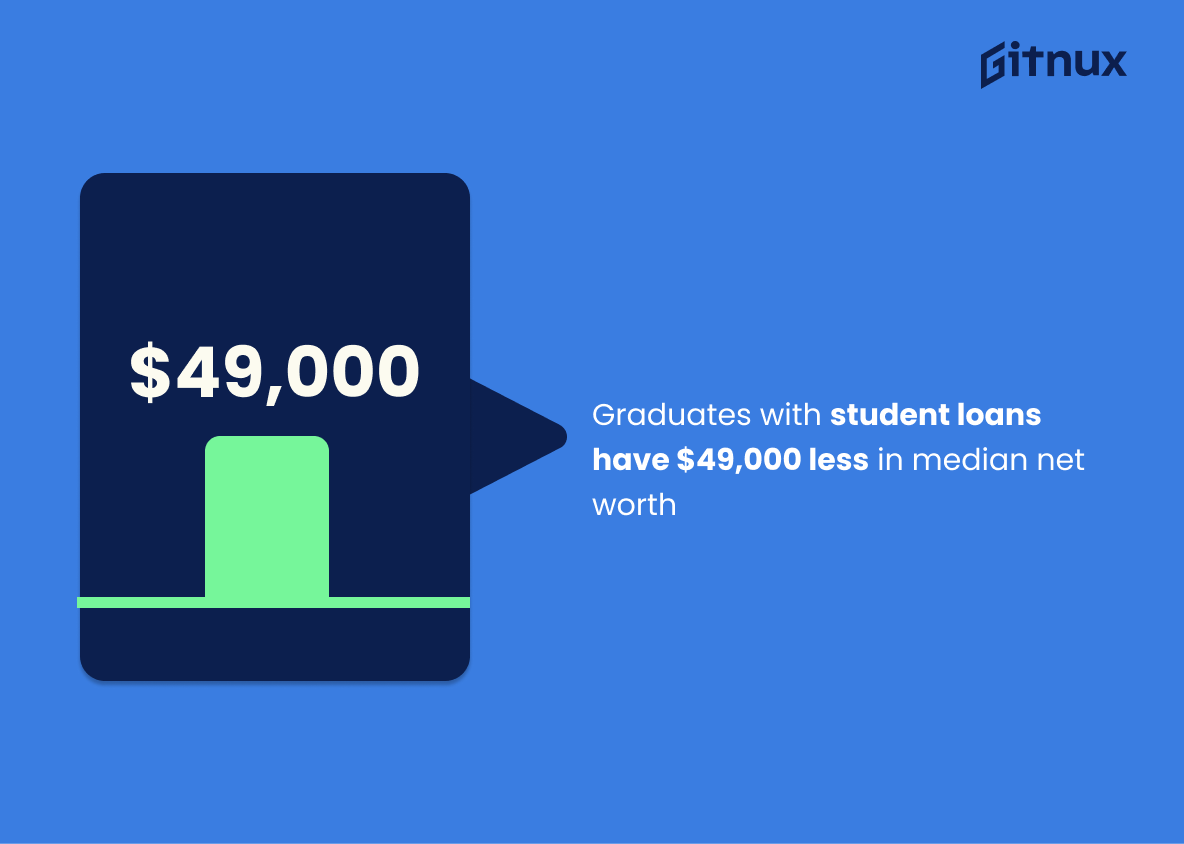The student debt crisis is a growing problem in the United States, with 45 million Americans holding nearly $1.7 trillion in total student loan debt. The class of 2019 graduated with an average of $28,950 per borrower and this number has tripled over the last decade. Women hold two-thirds (66.7%) of all student loan debts while 40% are expected to still be repaying loans by 2030 and 63% of millennials have at least a bachelor’s degree but also carry some form of student loan debt as well.
Medical and law students graduate with the highest amount on average – $186,500 for medical school graduates and $154,600 for law school graduates respectively – while 16.8% default on their payments altogether; borrowers aged 35-49 hold the largest share totaling around $548 billion dollars; black borrowers default five times more than white borrowers; 50% are either delinquent or in forbearance/deferment status; 28% parents cosign private loans for their children; unemployment rate among college grads increased 4%, prolonging repayment process during Great Recession period when economy was not doing so great itself – it grows six times faster than US economy does now. Income driven plans help 17.8%; only 32 percent public college attendees manage to get out without any kind of debt compared to 17 percent from private colleges who do that same thing yet those carrying such burden have median net worth which is almost fifty thousand less then those who don’t owe anything after graduation day passes them by… Public Service Loan Forgiveness program helps just 2%. Class 2022 will likely face even higher numbers reaching 37k mark each one owing something upon leaving educational institution they attended. And finally 90+ % attending profit oriented schools had borrowed money at some point during academic career there too.
Student Debt Crisis Statistics Overview
Student debt has tripled over the last decade.
This statistic is a stark reminder of the growing student debt crisis. It paints a vivid picture of the financial burden that students are facing, and the increasing pressure that they are under to pay off their loans. It is a clear indication that the student debt crisis is only getting worse, and that more needs to be done to address the issue.
Women hold nearly two-thirds (66.7%) of all student loan debt in the United States.
This statistic is a stark reminder of the disproportionate burden of student loan debt that women are shouldering in the United States. It highlights the need for greater access to resources and support for women in order to help them manage their student loan debt and achieve financial stability.
40% of borrowers are expected to still be repaying loans by 2030.
This statistic is a stark reminder of the long-term effects of the student debt crisis. It paints a picture of a future where 40% of borrowers are still struggling to pay off their loans a decade from now, highlighting the need for immediate action to address the issue.
63% of millennials with at least a bachelor’s degree have student loan debt.
This statistic is a stark reminder of the Student Debt Crisis, as it shows that even those with higher education are not immune to the burden of student loan debt. It highlights the fact that the crisis is not limited to those with lower incomes or educational attainment, but is a widespread issue that affects all levels of society.
The default rate on student loans is 16.8%.
This statistic serves as a stark reminder of the severity of the Student Debt Crisis. With 16.8% of student loans defaulting, it is clear that the burden of student debt is too much for many to bear.
Borrowers aged 35-49 hold the largest share of student loan debt, totaling $548 billion.
This statistic is a stark reminder of the Student Debt Crisis, as it shows that the largest group of borrowers are those in the prime of their working lives. It is a sign that the burden of student loan debt is not just a problem for young people, but is a problem that is affecting a large portion of the population. This statistic highlights the need for solutions to the Student Debt Crisis that are tailored to the needs of borrowers of all ages.
Black student loan borrowers default at a rate five times higher than white borrowers.
This statistic is a stark reminder of the systemic racism that exists in the student loan system. It highlights the fact that black borrowers are disproportionately affected by the student debt crisis, and that they are more likely to default on their loans than white borrowers. This is a troubling reality that needs to be addressed in order to ensure that all students have access to the same opportunities and resources when it comes to financing their education.
50% of student loan borrowers are either in forbearance, deferment, default, or delinquency on their loans.
This statistic is a stark reminder of the severity of the student debt crisis. It paints a picture of the immense financial burden that many students are facing, with half of loan borrowers unable to make payments on their loans. This statistic serves as a reminder of the need for more accessible and affordable education options, as well as more robust student loan repayment plans.
28% of parents cosign their child’s private student loans.
This statistic is a telling indication of the severity of the student debt crisis. It shows that even parents are feeling the pressure of the crisis, to the point where they are willing to put their own financial security on the line to help their children pay for college. This statistic speaks to the magnitude of the student debt crisis and the lengths to which people are willing to go to ensure their children have access to higher education.
The unemployment rate of young college graduates increased by 4% during the Great Recession, prolonging the repayment process.
This statistic is a stark reminder of the impact the Great Recession had on young college graduates. It highlights the fact that the economic downturn not only made it harder for them to find jobs, but also extended the repayment process of their student debt. This is a key factor in the Student Debt Crisis, as it has caused many graduates to struggle with debt for longer than expected.
Student loan debt is growing six times faster than the US economy.
This statistic serves as a stark reminder of the severity of the student debt crisis. It highlights the fact that student loan debt is growing at an alarming rate, far outpacing the growth of the US economy. This is a worrying trend that needs to be addressed in order to ensure that students are not burdened with unmanageable debt.
17.8% of student loan borrowers are taking income-driven repayment plans.
This statistic is a telling indication of the severity of the student debt crisis. It shows that a significant portion of student loan borrowers are struggling to make their payments and are relying on income-driven repayment plans to help them manage their debt. This statistic is a stark reminder of the financial burden that many students are facing and the need for more effective solutions to the student debt crisis.
Only 32% of students attending public colleges graduate debt-free, compared to 17% at private colleges.
This statistic is a stark reminder of the financial burden that students attending public colleges face. It highlights the fact that the majority of students attending public colleges are graduating with debt, while only a small fraction of those attending private colleges are doing the same. This disparity is indicative of the larger student debt crisis, and serves as a reminder of the need for more accessible and affordable higher education options.
College graduates with student loan debt have a median net worth that is $49,000 less than those without student loan debt.
This statistic serves as a stark reminder of the financial burden that student loan debt can place on college graduates. It highlights the fact that those with student loan debt are at a significant disadvantage when it comes to building wealth, as they are starting out with a net worth that is nearly $50,000 less than those without student loan debt. This statistic is a powerful illustration of the impact that student loan debt can have on a person’s financial future.
Over 90% of individuals who attended for-profit colleges borrowed at some point during their academic careers.
This statistic is a stark reminder of the prevalence of student debt among those who attend for-profit colleges. It highlights the fact that the majority of students who attend these institutions are taking on debt in order to finance their education, and that this debt can be a significant burden for them. This statistic is an important part of the overall picture of the student debt crisis, and it serves to illustrate the magnitude of the problem.
Conclusion
The student debt crisis is a growing problem in the United States, with 45 million Americans holding nearly $1.7 trillion in total student loan debt. The class of 2019 graduated with an average of $28,950 per borrower and this number has tripled over the last decade. Women hold two-thirds (66.7%) of all student loan debts while 40% are expected to still be repaying loans by 2030 and 63% millennials have at least bachelor’s degree but also carry some form of student loan debt as well. Medical and law students graduate with the highest amount on average ($186,500 & $154,600 respectively).
Default rates for borrowers stand at 16.8%, however black borrowers default five times higher than white borrowers; 50% are either in forbearance or delinquency on their loans too which further exacerbates the issue when coupled with 28% parents cosigning private loans for their children’s education costs – making it difficult to pay off these debts quickly due to unemployment rate increases during recessions such as Great Recession where young college graduates saw a 4 percent increase in joblessness prolonging repayment process even more so than before . Student Loan Debt is now six times faster than US economy growth rate itself showing how much strain it puts onto individuals who take out these types of financial aid options from banks/lenders etc., 17.8 % taking income driven repayment plans , 32 % public colleges graduating without any type of debt compared to only 17 % private colleges being able to do same thing , median net worth difference between those that had taken out Loans vs not having done so was around 49k dollars ; Public Service Loan Forgiveness program achieving 2 percent success rate amongst applicants thus far ; Class 2022 expecting 37337 dollar avg load upon graduation date & 90+percent attending for profit schools borrowing money along way shows just how dire situation really is right now .
It’s clear that there needs to be better solutions put into place if we want future generations not suffer under crippling amounts of educational related expenses they can’t afford nor repay back within reasonable time frame given current economic climate across country today .
References
0. – https://www.brookings.edu
1. – https://www.savingforcollege.com
2. – https://www.pewresearch.org
3. – https://www.educationdata.org
4. – https://www.urban.org
5. – https://www.lvcriminaldefense.com
6. – https://www.forbes.com
7. – https://www.studentloanplanner.com
8. – https://www.studentloanborrowerassistance.org
9. – https://www.bankrate.com
10. – https://www.nasfaa.org
11. – https://www.epi.org
12. – https://www.newyorkfed.org
13. – https://www.voanews.com
14. – https://www.aauw.org

